
Malate: The Vibrant Heart of Manila
Discover Malate, Manila's vibrant district known for its rich history, lively nightlife, picturesque baywalk, and diverse culinary scene.
Malate is a vibrant and historic district in Manila, Philippines. Known for its eclectic mix of colonial architecture and modern establishments, Malate offers an engaging experience for tourists. The district is famous for its lively nightlife, with numerous bars, clubs, and restaurants that come alive after dark. During the day, visitors can explore the various art galleries, antique shops, and cultural sites that dot the area. One of the must-see landmarks is the Malate Church, a beautiful baroque-style church dating back to the 16th century. The church is a testament to the rich history of the area and offers a serene escape from the bustling streets. Just a short walk away is the Baywalk, a picturesque promenade along Manila Bay. Here, tourists can enjoy stunning sunsets, street performances, and a variety of local food stalls. For those interested in local cuisine, Malate is a food lover's paradise. From traditional Filipino dishes to international fare, the neighborhood boasts a wide range of dining options. Whether you're looking for a quick bite or a fine dining experience, Malate has something to satisfy every palate. The district is also home to several boutique hotels and hostels, making it an ideal base for exploring the rest of Manila.
Local tips in Malate
- Visit Malate Church early in the morning to avoid crowds and enjoy a peaceful experience.
- Catch the sunset at Baywalk for a breathtaking view of Manila Bay.
- Try local street food vendors for an authentic taste of Filipino cuisine.
- Use public transportation or ride-hailing apps to navigate through Malate, as parking can be challenging.
- Check out the local art galleries and antique shops for unique souvenirs.
Malate: The Vibrant Heart of Manila
Malate is a vibrant and historic district in Manila, Philippines. Known for its eclectic mix of colonial architecture and modern establishments, Malate offers an engaging experience for tourists. The district is famous for its lively nightlife, with numerous bars, clubs, and restaurants that come alive after dark. During the day, visitors can explore the various art galleries, antique shops, and cultural sites that dot the area. One of the must-see landmarks is the Malate Church, a beautiful baroque-style church dating back to the 16th century. The church is a testament to the rich history of the area and offers a serene escape from the bustling streets. Just a short walk away is the Baywalk, a picturesque promenade along Manila Bay. Here, tourists can enjoy stunning sunsets, street performances, and a variety of local food stalls. For those interested in local cuisine, Malate is a food lover's paradise. From traditional Filipino dishes to international fare, the neighborhood boasts a wide range of dining options. Whether you're looking for a quick bite or a fine dining experience, Malate has something to satisfy every palate. The district is also home to several boutique hotels and hostels, making it an ideal base for exploring the rest of Manila.
Iconic landmarks you can’t miss
Our Lady of Remedies Parish (Archdiocese of Manila)
Explore the beauty and history of Our Lady of Remedies Parish, a stunning Catholic church in Malate, Manila, rich in culture and spirituality.

Rajah Sulayman Park
Explore the lush greenery and cultural heritage of Rajah Sulayman Park, a peaceful retreat along Manila Bay perfect for relaxation and recreation.

Ellinwood Malate Church Historical Marker
Explore the Ellinwood Malate Church, a beautiful historical landmark in Manila, showcasing stunning architecture and a rich tapestry of cultural heritage.
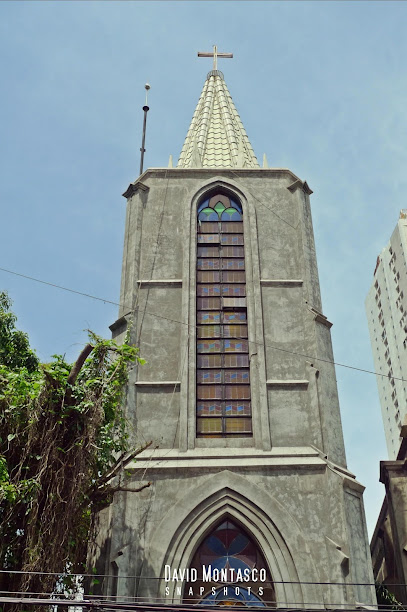
Church Of Malate Historical Marker
Discover the historical significance of the Church of Malate, a landmark embodying Manila's rich cultural heritage and architectural beauty.

Jose P. Laurel Monument and Jose P. Laurel Historical Marker
Explore the historical significance of the Jose P. Laurel Monument in Manila, a tribute to a pivotal figure in Philippine history amidst scenic surroundings.

Apolinario Mabini Monument and Historical Marker
Explore the Apolinario Mabini Monument in Manila, a tribute to a national hero and a significant historical landmark reflecting the Philippines' rich heritage.

Pablo Ocampo Monument and Historical Marker
Discover the rich heritage of the Philippines at the Pablo Ocampo Monument in Malate, a historical landmark that honors a key figure in Filipino history.

The New Remedios Circle Historical Marker
Explore the rich history of Manila at The New Remedios Circle Historical Marker, a serene spot that commemorates the city's cultural heritage.

Fuerte de San Antonio Abad
Explore Fuerte de San Antonio Abad, a historical gem in Manila, showcasing the rich colonial heritage and architectural beauty of the Philippines.
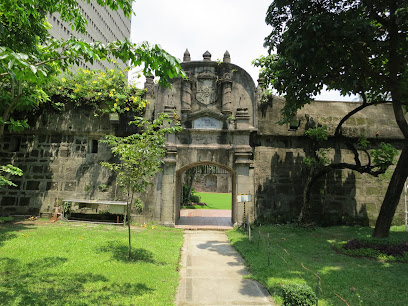
Manila City/Pasay city District Boundary
Uncover the historical essence and vibrant culture at the Manila-Pasay district boundary, a captivating journey through the Philippines' rich heritage.

Unmissable attractions to see
Rizal Park
Explore the lush landscapes and rich history of Rizal Park, Manila's beloved urban oasis and cultural landmark.

Manila Ocean Park
Explore the enchanting marine world at Manila Ocean Park, a captivating oceanarium and theme park in the heart of Manila, Philippines.

National Museum of Fine Arts
Explore the rich tapestry of Filipino art at the National Museum of Fine Arts, where history and creativity come alive in Manila's cultural heart.

National Museum of Natural History
Discover the Philippines' rich natural heritage at the National Museum of Natural History, a captivating destination for nature lovers and curious travelers.

Manila Zoo
Experience the charm of Manila Zoo, where wildlife, botanical beauty, and family fun come together in a captivating urban oasis.

Rizal Park - North
Discover the beauty and history of Rizal Park, a tranquil escape rich in culture and dedicated to the Philippines' national hero.

Casa Manila
Explore Casa Manila, a historical museum in Intramuros showcasing the rich cultural heritage of the Philippines during the Spanish colonial era.

Rajah Sulayman Park
Experience the tranquility and beauty of Rajah Sulayman Park, a serene oasis in Manila perfect for relaxation and cultural exploration.

ASEAN Garden
Discover the serene beauty of ASEAN Garden in Malate, Manila, a peaceful retreat amidst the urban landscape, perfect for relaxation and cultural immersion.

Essential places to dine
The Aristocrat Restaurant
Experience the rich flavors of authentic Filipino cuisine at The Aristocrat Restaurant in Malate, Manila – a culinary gem steeped in history.
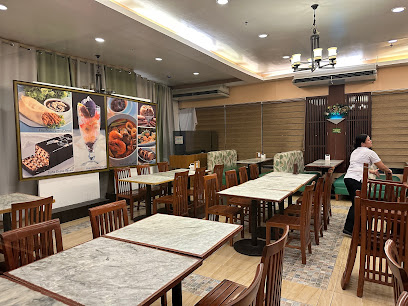
Bistro Remedios
Savor authentic Filipino cuisine at Bistro Remedios – where tradition meets innovation in every delicious dish.

Casa Armas Tapas Bar Y Restaurante
Experience the essence of Spanish cuisine at Casa Armas Tapas Bar Y Restaurante in Malate, Manila - perfect for tapas lovers and culinary adventurers alike.

Cafe Adriatico
Discover Café Adriatico: Where Filipino hospitality meets exquisite culinary experiences in the heart of Manila's vibrant Malate district.

Wok Inn
Experience the best of Chinese and Filipino cuisine at Wok Inn in Malate – where flavors meet tradition.

Silya
Experience the essence of Filipino cuisine at Silya in Malate – where every dish tells a story.

Mr. Poon Restaurant
Experience authentic Filipino flavors at Mr. Poon Restaurant in Malate, Manila - a culinary haven for food enthusiasts.

Yurakuen japanese restaurant
Discover authentic Japanese flavors at Yurakuen, where traditional cuisine meets modern Manila in an inviting atmosphere.

Bamboo Giant Garden Restaurant & Bar Malate
Discover Bamboo Giant Garden Restaurant & Bar in Malate for an unforgettable dining experience amidst nature's beauty and vibrant nightlife.

Braska
Experience authentic Filipino cuisine at Braska in Malate, Manila - where tradition meets taste in a cozy bar and cafe setting.
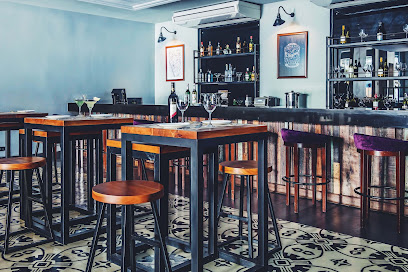
Markets, malls and hidden boutiques
Ongkeco’s Hobby Shop
Explore Ongkeco’s Hobby Shop in Malate, Manila – a paradise for hobbyists and creative souls with a vast selection of unique items.

Fashion Corner
Explore the latest trends and timeless styles at Fashion Corner, the premier clothing store in Manila's vibrant Malate district.
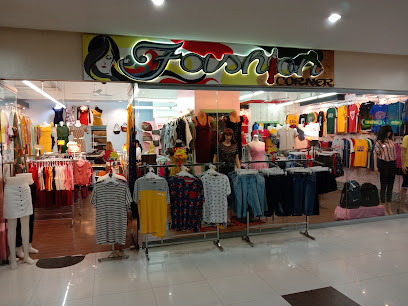
Papemelroti Robinson's Place Manila
Explore the charm of Filipino craftsmanship at Papemelroti Robinson's Place Manila, your go-to gift shop for unique souvenirs and home goods.

Pride Exchange
Explore the vibrant culture of Manila at Pride Exchange, your go-to destination for authentic Filipino souvenirs and unique local crafts.

Gift
Discover unique souvenirs and local crafts in Malate, Manila's vibrant district, perfect for capturing memories of your travels.

Hernando's Rings 'N Things Shop
Explore the enchanting Hernando's Rings 'N Things Shop in Malate, where unique jewelry pieces await to tell your travel story.

3 Nathan's Shop
Explore the vibrant culture of the Philippines through unique souvenirs at Nathan's Shop in Malate, Manila, your gateway to authentic Filipino craftsmanship.

Tesoro's Exclusive Philippine Handicrafts
Explore the vibrant world of Filipino craftsmanship at Tesoro's Exclusive Philippine Handicrafts, a treasure trove of unique gifts and souvenirs.

The Store at DLSU
Discover unique Filipino souvenirs at The Store at DLSU, a treasure trove of local crafts and cultural treasures in the heart of Manila.

Kuya Jess Online Shop
Explore Kuya Jess Online Shop in Malate, a vibrant variety store featuring unique finds from fashion to local delicacies in the heart of Manila.

Essential bars & hidden hideouts
Chill Bar Bocobo - Korea Town Manila
Discover the serene ambiance of Chill Bar Bocobo in Korea Town Manila, perfect for relaxation and cultural experiences.

Oarhouse Pub of Manila
Discover the lively Oarhouse Pub in Malate, Manila, where delicious food, vibrant cocktails, and a welcoming atmosphere await you.

Yakitori Dori
Experience the vibrant culinary culture of Manila at Yakitori Dori, where flavorful grilled dishes meet a lively atmosphere.

Default Cafe Pub - Manila
Experience the vibrant nightlife at Default Cafe Pub in Manila, where eclectic decor meets delicious food and drinks for a memorable night out.
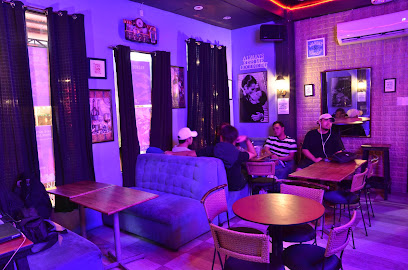
Sound Stage Music Bar
Discover the lively Sound Stage Music Bar in Malate, Manila, where delicious grills and live music create an unforgettable night out.

INTRO LOUNGE BAR & RESTAURANT
Discover the lively atmosphere of INTRO LOUNGE BAR & RESTAURANT, where drinks, dining, and Manila's nightlife come together.
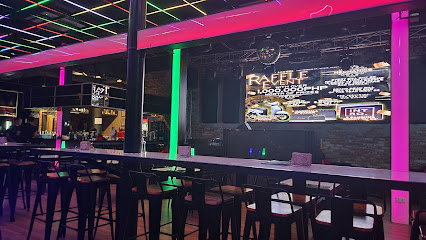
Ludus Bar
Experience the vibrant nightlife at Ludus Bar in Malate, where delicious grilled dishes and refreshing drinks create a memorable dining experience.

Spirits Malate Bar
Immerse yourself in Manila's nightlife at Spirits Malate Bar, where expertly crafted cocktails and a vibrant atmosphere await.

Only You Bar Club and Music Lounge
Dive into Manila's nightlife at Only You Bar Club and Music Lounge, where live music and vibrant atmosphere create unforgettable memories.
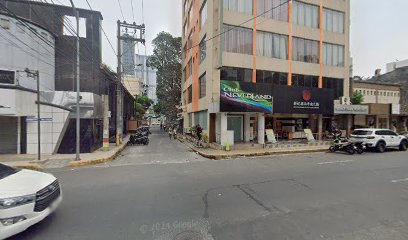
Malate District Bar and Restaurant Inc
Discover the vibrant nightlife of Malate at this lively bar and restaurant, offering delicious food, refreshing drinks, and unforgettable experiences.

Local Phrases
-
- HelloKamusta
[ka-mu-sta] - GoodbyePaalam
[pa-a-lam] - YesOo
[o-o] - NoHindi
[hin-di] - Please/You're welcomeMangyaring
[man-gya-ring] - Thank youSalamat
[sa-la-mat] - Excuse me/SorryPaumanhin/Pasensya
[pau-man-hin/pa-sen-sya] - How are you?Kamusta ka?
[ka-mu-sta ka?] - Fine. And you?Mabuti. Ikaw?
[ma-bu-ti. i-kaw?] - Do you speak English?Nagsasalita ka ng Ingles?
[nag-sa-sa-li-ta ka ng in-gles?] - I don't understandHindi ko maintindihan
[hin-di ko main-tin-di-han]
- HelloKamusta
-
- I'd like to see the menu, pleaseGusto ko makita ang menu, pakiusap
[gus-to ko ma-ki-ta ang me-nu, pa-ki-u-sap] - I don't eat meatHindi ako kumakain ng karne
[hin-di a-ko ku-ma-ka-in ng kar-ne] - Cheers!Mabuhay!
[ma-bu-hay!] - I would like to pay, pleaseGusto ko bayaran, pakiusap
[gus-to ko ba-ya-ran, pa-ki-u-sap]
- I'd like to see the menu, pleaseGusto ko makita ang menu, pakiusap
-
- Help!Tulong!
[tu-long!] - Go away!Lumayo ka!
[lu-ma-yo ka!] - Call the Police!Tawag sa Pulis!
[ta-wag sa pu-lis!] - Call a doctor!Tawag ng doktor!
[ta-wag ng dok-tor!] - I'm lostNawawala ako
[na-wa-wa-la a-ko] - I'm illMay sakit ako
[may sa-kit a-ko]
- Help!Tulong!
-
- I'd like to buy...Gusto ko bumili ng...
[gus-to ko bu-mi-li ng...] - I'm just lookingNagtitinda lang ako
[nag-ti-tin-da lang a-ko] - How much is it?Magkano ito?
[mag-ka-no i-to?] - That's too expensiveMasyadong mahal iyan
[ma-sya-dong ma-hal i-yan] - Can you lower the price?Pwede bang babaan ang presyo?
[pwe-de bang ba-ba-an ang pre-syo?]
- I'd like to buy...Gusto ko bumili ng...
-
- What time is it?Anong oras na?
[a-nong o-ras na?] - It's one o'clockAlas-una na
[a-las-u-na na] - Half past (10)Alas-dyes y medya
[a-las-dyes i med-ya] - MorningUmaga
[u-ma-ga] - AfternoonHapon
[ha-pon] - EveningGabi
[ga-bi] - YesterdayKahapon
[ka-ha-pon] - TodayNgayon
[nga-yon] - TomorrowBukas
[bu-kas] - 1Isa
[i-sa] - 2Dalawa
[da-la-wa] - 3Tatlo
[tat-lo] - 4Apat
[a-pat] - 5Lima
[li-ma] - 6Anim
[a-nim] - 7Pito
[pi-to] - 8Walo
[wa-lo] - 9Siyam
[si-yam] - 10Sampu
[sam-pu]
- What time is it?Anong oras na?
-
- Where's a/the...?Saan ang...?
[sa-an ang...?] - What's the address?Ano ang address?
[a-no ang ad-dres?] - Can you show me (on the map)?Pwede mo ba akong ipakita (sa mapa)?
[pwe-de mo ba a-kong i-pa-ki-ta (sa ma-pa)?] - When's the next (bus)?Kailan ang susunod (bus)?
[ka-i-lan ang su-su-nod (bus)?] - A ticket (to ....)Isang tiket (papunta sa ....)
[i-sang ti-ket (pa-pun-ta sa ....)]
- Where's a/the...?Saan ang...?
History of Malate
-
Malate's history can be traced back to the Spanish colonial period when it was established as a part of Manila in the late 16th century. The area was originally a small fishing village named 'Malate,' derived from the Tagalog word 'malatim,' referring to the brackish waters of the Manila Bay. The Spanish constructed the Malate Church in 1588, which became a focal point for the community.
-
In the 19th century, Malate transformed into a vibrant cultural center, attracting artists, writers, and intellectuals. The area became associated with the Propaganda Movement, where Filipino reformists sought to address social injustices under Spanish rule. Notable figures such as José Rizal frequented Malate, and the neighborhood became a gathering place for discussions on nationalism and reform.
-
During World War II, Malate suffered extensive damage due to the Pacific War. The area was heavily bombarded, leading to significant loss of life and property. After the war, Malate underwent reconstruction, and many of its historic buildings were restored. This period also saw the emergence of nightlife and entertainment venues, contributing to its reputation as a lively district.
-
The late 20th century brought significant urban development to Malate, with the construction of hotels, restaurants, and commercial establishments catering to both locals and tourists. The cultural landscape evolved, with the emergence of art galleries, theaters, and performance spaces, making Malate a focal point for Manila's art scene.
-
Despite rapid modernization, Malate has made efforts to preserve its historical and cultural heritage. The Malate Church remains a significant landmark, while the neighborhood continues to celebrate its diverse cultural influences, including Spanish, American, and indigenous Filipino traditions. Annual festivals and events reflect this rich cultural tapestry, showcasing the neighborhood's unique identity within the broader context of Manila.
Malate Essentials
-
Malate is easily accessible from various neighborhoods in Manila. From the airport, you can take a taxi or ride-hailing service directly to Malate, which typically takes around 30-60 minutes depending on traffic. If you're coming from other neighborhoods, the Light Rail Transit (LRT) Line 1 has a station at Malate, making it convenient to travel from areas like Pasay, Makati, and Manila's city center. Buses and jeepneys also run frequently along major roads leading to Malate.
-
Malate is a walkable neighborhood with many attractions close to each other. Local jeepneys and buses are available for longer distances. The LRT Line 1 can also be used to travel to nearby areas quickly. For a more local experience, consider renting a bicycle or using a bike-sharing service to explore the area. Taxis and ride-hailing services like Grab are easily accessible for convenient transport.
-
Malate is generally safe for tourists, but it is advisable to remain vigilant, especially at night. Areas around the Malate Church and nightlife spots can attract pickpockets, so always keep your belongings secure. Avoid walking alone in poorly lit streets and be cautious in less crowded areas. It’s best to stay informed about local news and avoid demonstrations or large gatherings.
-
In case of an emergency, dial 911 for police assistance or medical help. Familiarize yourself with nearby hospitals and clinics. Make sure you have travel insurance that covers emergencies. Pharmacies in Malate are available for minor health needs, and it's advisable to keep a list of local emergency contacts handy.
-
Fashion: Do dress modestly when visiting religious sites. Don’t wear overly revealing clothing. Religion: Do show respect for local customs; remove shoes when entering places of worship. Public Transport: Do give up your seat for elderly passengers. Don’t eat or drink on public transportation. Greetings: Do greet locals with a smile or a nod. Don’t use overly informal language unless you know the person well. Eating & Drinking: Do try local street food and beverages. Don’t refuse food offered by locals, as it may be seen as impolite.
-
To experience Malate like a local, visit the nearby markets for fresh produce and unique food items. Engage with local vendors and ask for recommendations. Explore the vibrant nightlife along Adriatico Street, where you can find bars and restaurants popular with locals. Don’t miss the sunset at Manila Bay, a favorite gathering spot for residents. Participate in local festivals if your visit coincides with one, as they offer a glimpse into Filipino culture.
Trending Landmarks in Malate
-
Our Lady of Remedies Parish (Archdiocese of Manila)
-
Rajah Sulayman Park
-
Ellinwood Malate Church Historical Marker
-
Church Of Malate Historical Marker
-
Jose P. Laurel Monument and Jose P. Laurel Historical Marker
-
Apolinario Mabini Monument and Historical Marker
-
Pablo Ocampo Monument and Historical Marker
-
The New Remedios Circle Historical Marker
-
Fuerte de San Antonio Abad
-
Manila City/Pasay city District Boundary










